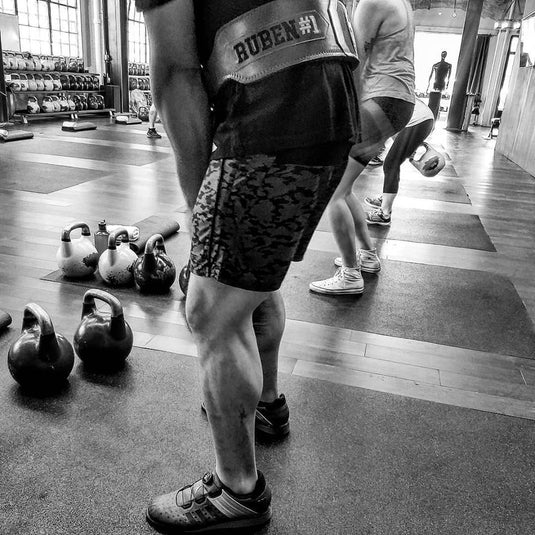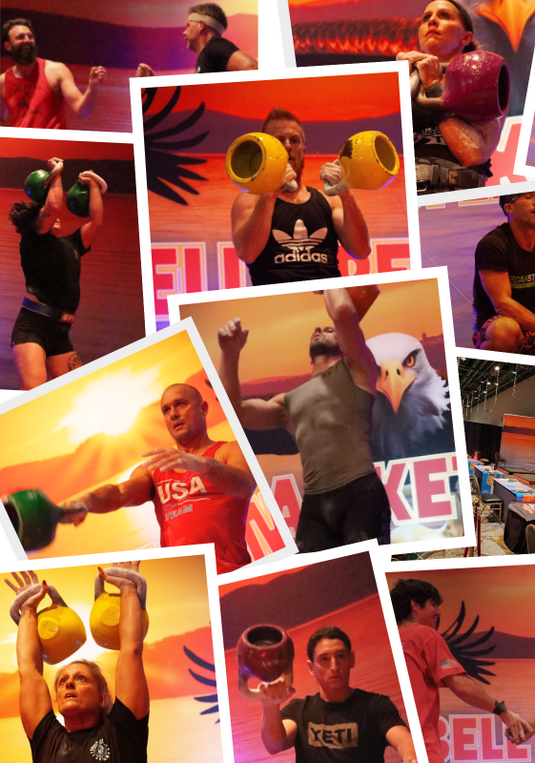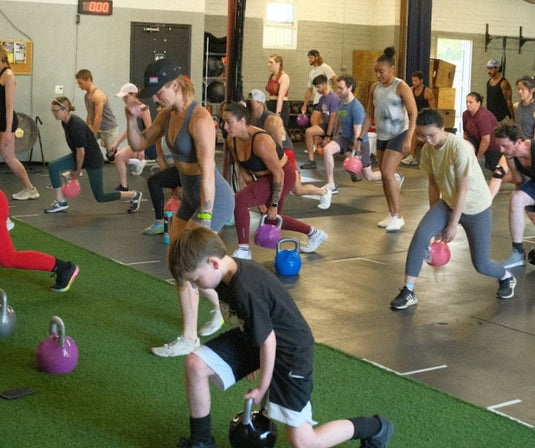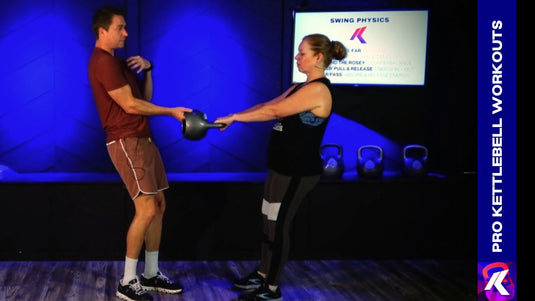Are Kettlebells Good for Your Core?

Updated: Jul 20
When we say “core’” we are talking about everything from your lats down to your booty. That includes your abs, obliques, psoas, hip flexors, glutes, erectors, pelvic floor, rhomboids etc.
In our opinion, kettlebells are hands-down the best gym equipment to strengthen your core.
Nothing matches its ability to strengthen, its versatility, portability and ability to be used by almost anybody.
Kettlebells are spherical weights with a handle on top. Their very shape makes them inherently optimized for strengthening your core, ligaments, tendons and stabilizer muscles.
The off-setting of the weight from the handle makes it so that when you’re maneuvering a kettlebell. It will make you naturally activate your core and stabilizer muscles just to stay balanced.
It’s also that element of the kettlebell’s design that makes it perfectly suited to swinging exercises. You become a giant human pendulum, using your own body - and definitely your core - to counter the momentum of the swinging kettlebell. Do just 30 seconds of kettlebell swings and you'll see what I mean.
Here Are Our Top Five Kettlebell Exercises for Core
You’re likely reading this because you want to know the best kettlebell core exercises to try as soon as possible.
There are truly more than five core exercises with kettlebell that deserve the honor of being listed here. But these five offer a variety of difficulties and added benefits aside from being fun and great core exercises.

1. The Swing
You could have guessed the humble and versatile swing - in all its variations – lands at the top of this list.
The symmetrical 2-handed or double kettlebell swing targets your glutes, hips, abs and back equally. A single-hand swing causes you to counter-rotate against the momentum of the kettlebell, which activates your obliques and lats as well as isolating individual glutes.
Admittedly, the kettlebell swing can be a bit intimidating. But the laundry list of benefits make it worth learning how to do correctly. Got 8 minutes to learn? From setting your feet distance to achieving the right swing trajectory, there are so many things to learn about the kettlebell swing.
There’s a whole workshop’s worth of technique in this video: How to Swing Like a Pro – Don't Make the #1 Mistake.
2. The Kettlebell Sit-Up Get-Up
Swings are amazing and worth the time to learn them, but there are less technical core exercises too. This exercise will blast your abs, shoulders and triceps.
Start by lying on your back with your knees bent. With both hands, hold a kettlebell close to your chest. As you sit up, press the kettlebell directly overhead until you are fully upright.
With your arms locked out, lower yourself back down slowly and repeat. For an extra challenge try elevating your feet while performing this exercise.

3. The Kettlebell Windmill
Kettlebell windmills primarily target the obliques, but will also activate the core muscles, lats, erectors, triceps, and shoulders.
If you have never done this exercise, make sure to practice it first without weight – just hold your arm up. Then try it with a light weight.
To perform this exercise, stand with your feet just outside of shoulder width. Plant your left leg and turn your right foot out at a 45-degree angle and press your left arm (with or without a kettlebell) straight up to the sky.
Now slowly bend to the right side. Slide your right hand down your right leg, reaching toward your right foot. As you are bending to the right, you’ll be pushing your hips to the left.
Only bend as far as you can while still keeping your arm straight and hand or kettlebell directly over your shoulder. Try to keep both legs straight.
If you need to bend a leg, bend the leg of the foot you’re reaching toward. Slowly return to standing to complete the rep. Remember to move slowly and engage your core throughout the exercise.
Repeat the move on the opposite side.
4. The Russian Twist
The Russian twist is great for core strength - it’s an ab and oblique crusher. This exercise will also hit your biceps.
The proper form for a Russian Twist involves sitting on the floor with your knees slightly bent in front of you. Think about keeping great posture (long spine, shoulders back) while holding your kettlebell in front of you. You can hold your kettlebell a variety of ways but try it by the horns and upside-down with the bottom of the kettlebell around chin height.
Now rotate your trunk and shoulders to one side. Straighten your arms to lower the kettlebell toward the floor next to your hip.
Then pull the kettlebell up and repeat by turning to the other side. The Russian Twist is best performed slowly. For “extra-credit,” work your lower abdominal muscles and hip flexors by elevating your feet slightly while performing this exercise.
5. The Turkish Get Up
The Turkish Get Up is by far the most complicated of the five exercises mentioned, but also targets the most muscle groups. It can also be a full body workout all on its own.
Originally created as an exercise for wrestlers, this movement will make you strong from the inside out on virtually every plane of motion – and it especially benefits your core.
I’ve been a strong proponent of NOT doing Turkish Get Ups. Most of my career has been teaching kettlebell classes, workshops and trainings where there are a lot of people with a variety of experience levels and just too many moving parts to be able to watch everyone at once.
Conversely, I’ve seen “experienced” people get in trouble with Turkish Get Ups. It happens because once they get the hang of it, they can take the technicality of it for granted. Some rush the move or get their ego involved and attempt it with more weight than they should.
So, my strongest recommendation to get the great core benefits of Turkish Get Ups without the risk is to first watch this video on How to do the Turkish Getup.
Then, develop your muscle memory for it by breaking it down into sections. Learn the situp, the leg sweep, and the stand prior to knocking out reps.
I highly recommend starting very light and getting one-on-one feedback from a coach (and possibly having a spotter) when you are a kettlebell beginner. I also highly suggest using a small glass of water instead of a kettlebell to perfect the move and your balance before adding weight.
Full Workouts for Kettlebell Core Training
The truth is, just about every kettlebell exercise ends up being a core exercise. And every kettlebell workout ends up being a kettlebell core workout!
There are hundreds of workouts on the Pro Kettlebell Workouts - here's a short cut to your new favorite core-crushing kettlebell videos.
Get your strength, cardio, mobility and core training done in one short workout with Pro Kettlebell. Try our online kettlebell classes today - you will not regret it.







